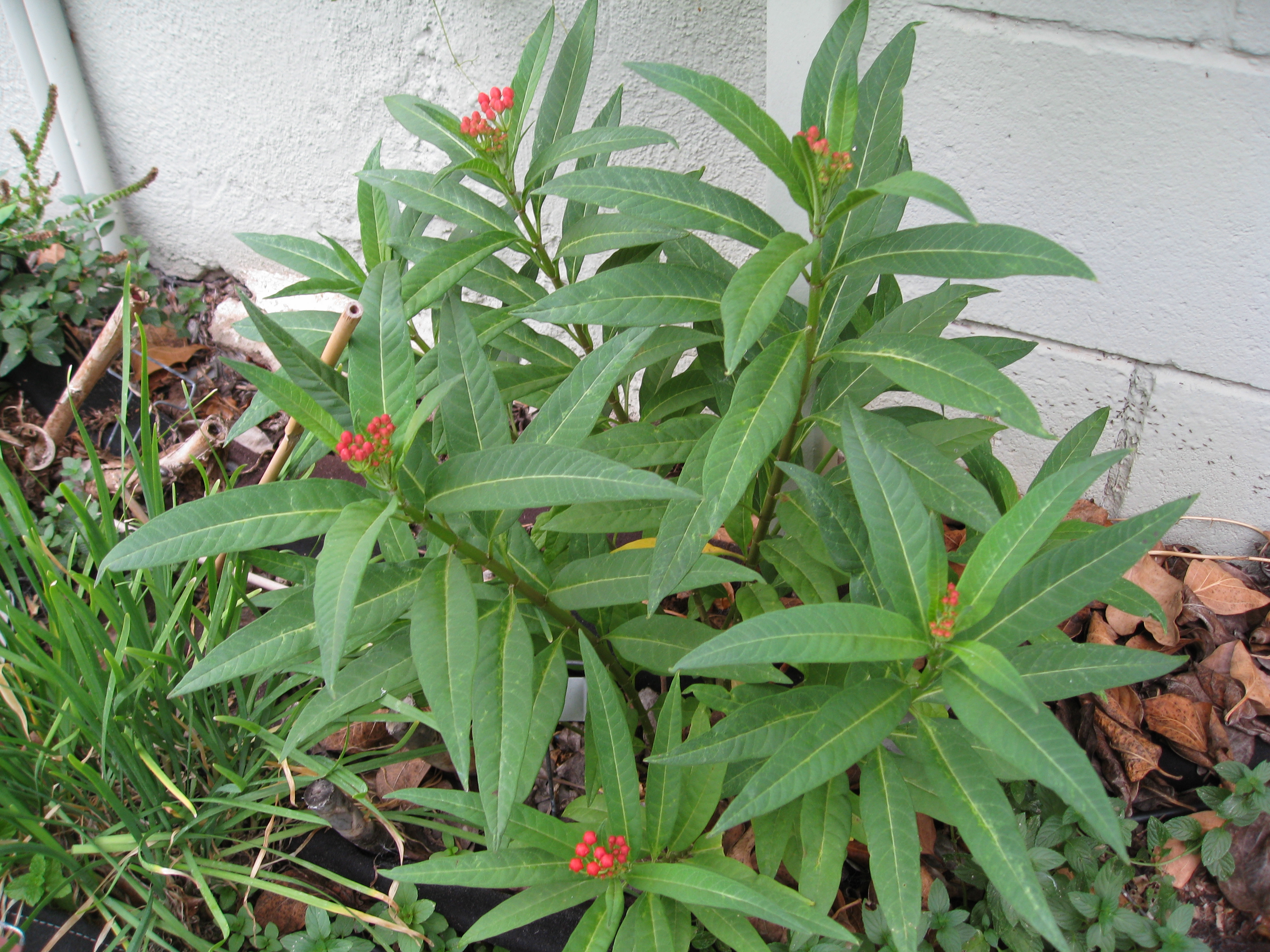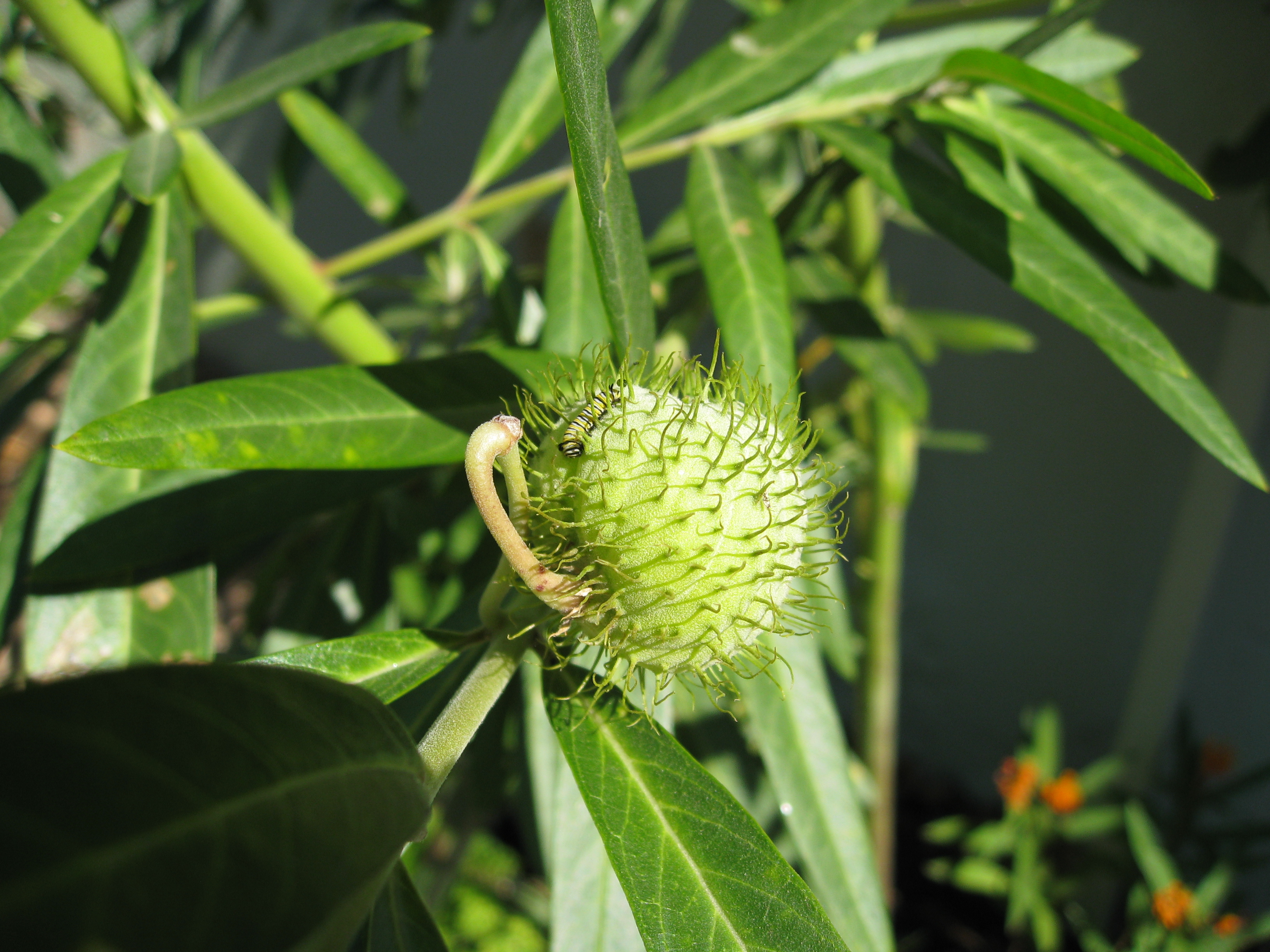A question came into Ask Gardenerd this week that I even asked myself last year:
“First year planting swamp milkweed for Monarchs – just had two butterflies exit their cocoons this morning. Had five plants this year – going big next year. Question – lots of info on how to get plants started but nothing on end of season maintenance. Should we cut back the stems on the existing plants or do we just leave them? Not sure what to do now that winter is approaching. Thanks – Bob”
You’re right, Bob, not many sites talk about what to do with the milkweed after it’s finished for the season. I ran into the issue last year when I was staring at an 8 ft. stalk of Asclepias Physocarpa, denuded after a season of successful Monarch habitation. What now? The answer is, it depends.
Annual vs. perennial – if the milkweed you are growing performs as an annual in your hardiness zone, like the Asclepias Physocarpa pictured above, you can scatter the open seed pods around the soil and cut the stalks down to the ground. The roots will dissolve over time and new plants will grow from dispersed seeds.
This milkweed was supposed to be perennial in my garden, but after waiting several months for new growth to appear (meanwhile other milkweeds were sprouting new leaves) I decided to cut it down. I left about 6″ of stem above ground, just in case it decided to leaf-out again, but it didn’t. Instead new sprouts came up from seeds I dispersed nearby.
You mentioned that you are growing swamp milkweed, Asclepias incarnata. Technically it is a perennial, but if you run into issues like I did (no leaves emerging) then re-seed and cut back old foliage.

Perennial milkweeds grow back year after year. They provide habitat for traveling Monarch butterflies.
If the milkweed is a perennial, like Asclepias curassavica (tropical milkweed) pictured above, you’ll notice tiny leaves growing from the base of the plant at some point after the upper stems have been consumed. Wait for that. Then cut back stems to the new growth and the plant will take off from there.
As a reminder, it is ideal to grow milkweeds that are native to your state if possible. In California, we have several native milkweeds, and seeds can be obtained from Theodore Payne Foundation for at least one of them.
MonarchWatch.org has a vendor list of seed sellers as well.
Thanks for writing in, Bob. Good luck with your butterfly garden!









My swamp milkweed came back from the roots but it hasn’t blossomed this spring. This is the plants 2nd year in our garden. Others in my area are seeing caterpillar action. Patience is not my long suit.
I wish I knew more about swamp milkweed. Maybe one of our Gardenerd community members can post a suggestion to get it to bloom sooner.
I have a few catapillars now. Should I cut off flowers from my Milkweed or wait till October?
I’d leave it. Butterflies are all over the place right now, and the flowers will go to seed and reseed themselves in fall. If you want that, then leave them.
Its April and I am seeing a few Catapillars. Should I cut of the flowers from my Milkweed. They look great but someone told me to cut them back now and not wait for winter.
Confused
In Southern California do I cut back the milkweed now to get larger milkweed bushes? I planted about 25 plants and I want them to grow larger next spring. How low to do I cut them back?
If the stems have been denuded of leaves, cut them back to a few inches above the ground. According to LiveMonarch.com, to get larger plants in the spring, “Cuting off the top of the plant after they reach 8-12″ creates more stalks and more leaves.” These are Reduction cuts that generate more growth from side branches. That should do it.
I use Dawn dish soap and water in a spray bottle on aphids and it smothers them over night. Also the orange and black bug also.
I have 2 milksweeds, I have them in large containers and had them up on a wall where I get more sun… When I looked at them recently the leaves were not growing and it was covered in millions of aphids. I decided not to use the soap and water, but just went with the direct spray with a water bottle, I would spray them off morning and evening, 5 days later, maybe I find 2-3 and new leaves are starting to grow.
Thanks for sharing, Mike. We gardenerds can never underestimate the power of a strong blast of water.